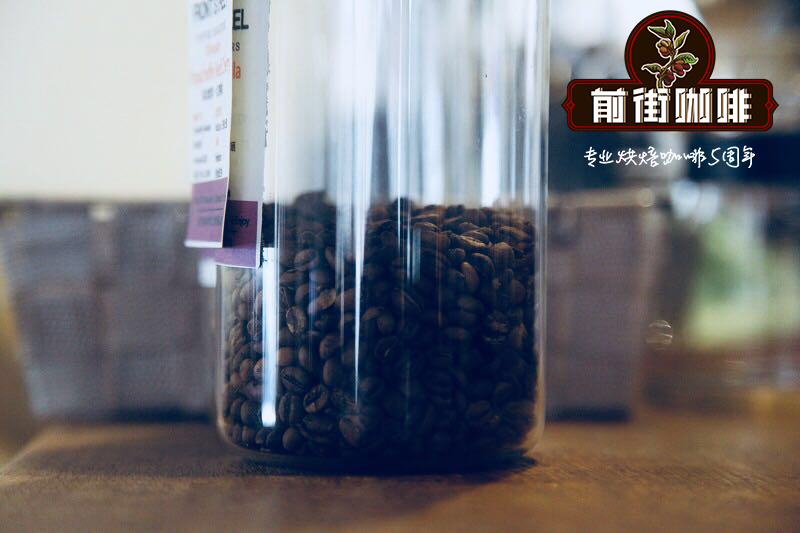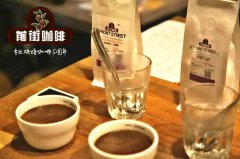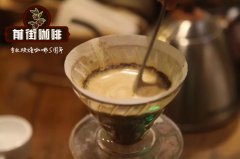How about Yemeni coffee? where is the most famous producing area of Yemeni coffee?

Professional coffee knowledge exchange more coffee bean information please follow the coffee workshop (Wechat official account cafe_style)
For lovers who dabble in coffee slightly, when it comes to Yemeni coffee, it is easy to think of "mocha".
If Ethiopia is a changeable woman-complex fruit and flowers, then Yemen is a brave man-chocolate, tobacco and thick taste with a gentle sweet tail.
Yemen has a long history of growing coffee. By the early 17th century, Yemeni coffee beans began to be exported to Europe from the southwestern port of Mocha. Europeans called the coffee beans shipped from the port of Mocha "mocha coffee". Ethiopia, which is across the red sea from Yemen, later used the port of Mocha to export coffee beans, so that coffee beans treated in the sun in Ethiopia are often regarded as mochas.
Yemeni coffee is still grown in much the same way as it was five hundred years ago, almost all on mountain slopes as high as 3000 to 7000 feet. Due to the lack of rainfall, it is necessary to rely on the strong water retention capacity of coffee trees to survive the dry period. The bad growth conditions make the coffee beans smaller, but the hardness is quite high. The varieties of Yemeni coffee are also quite complex, including adzuki bean Ismaili and the ancient heirloom, as well as Adeni and Mattari.
Yemeni coffee is a kind of sun treatment, where the fruits are usually exposed to the sun on the courtyard or roof after harvest, and some of them are even harvested after being dried directly on the trees (this method is called floating).
The natural sun treatment in Yemen is to manually harvest fully mature coffee beans and directly place the newly harvested coffee beans in a special coffee drying yard or in their own compacted soil front yard to receive the sun. During the sun drying period with Taiwan, rice is usually turned over with a wooden rake to keep each bean evenly dried. After about 20 days of coffee drying, remove the outer pulp and peel from the coffee beans. Yemeni coffee has a rich, complex, mellow, strong fermentation flavor and low acidity, coupled with the uncertainty of Yemeni coffee (when it rains in the season). It is not too much to call it the most special coffee in the world.
Dried fruit must be ground and shelled. Today, Yemen still retains the ancient way of shelling by stone grinding, which is pulled by camels or donkeys.
There are many coffee producing areas in Yemen, and Mattari in Bani Matar (Bany Mattar) province is the most famous, and it is also the highest quality coffee exported in Yemen.
In the early days, the port of Mocha, which was heavily responsible for export, had many names and spellings, such as Mocha, Mokka, Moca, Moka, Al-Mocha, Al-Makha. Wait. The port of Mocha was later abandoned due to siltation and is now exported from the eastern port of Aden and the northern port of Hedda (Hodeida).
The [Yemeni mokamatari] of Qianjie Coffee may be due to the Yemeni way of growing and ancient sun treatment, which makes this bean taste a little early. Wild, full of wild and unruly, people are intoxicated by the rich chocolate flavor in the entrance, the coffee is slightly cool, and the sweet and sour grapes fill the whole mouth.
Qianjie cooking parameters are suggested:
V60According 89 ℃ / 1 15 / time two minutes
Flavor: dark chocolate, grapes, spices
Since people started drinking coffee, mocha has been recognized as a good coffee, with distinctive acidity, and some people think that mocha's special acidity is menacing. That's because after a hard day's work, people's sense of taste becomes dull to delicacy. The coffee itself is very fragrant. The Yemeni Moka is represented by the Mattari produced in Bani Matar. It has a sweet, smooth and unique flavor. The quality of being slightly sour and having strong stamina. Mocha is suitable for mixing with Milds coffee, especially for mixed coffee with Mysso coffee, Indonesian Java coffee and Sumatra coffee. Locals like to make Turkish coffee with a mixture of mocha and Meso. It is the most suitable coffee to drink after a meal. It is also the best of mochas.
Related recommendation: what is mocha coffee? Yemeni mocha-Matali sun beans are the real mocha coffee beans in Yemen
Important Notice :
前街咖啡 FrontStreet Coffee has moved to new addredd:
FrontStreet Coffee Address: 315,Donghua East Road,GuangZhou
Tel:020 38364473
- Prev

What are the ancient ways of processing Yemeni coffee? What is the flavor of Yemeni coffee?
Professional coffee knowledge exchange More coffee bean information Please pay attention to coffee workshop (Weixin Official Accounts cafe_style) Yemen Mocha Mattari Yemen Mocha Country: Yemen Region Origin: Mattari Altitude: 1,300~ 1,900 m Varietal Variety: Typic
- Next

Yemeni Coffee Manor introduction: coffee beans with red wine aroma of Yishima Haraazi
For more information on coffee beans, please follow the coffee workshop (Wechat official account cafe_style). Some people say it is the oldest tree species and some people say it is the producing area. In the local market of Haraazi in Yemen, the suppliers of spices, tea, Qat katgrass and coffee say that his coffee beans are special because they are always mixed with very special flavor.
Related
- Does Rose Summer choose Blue, Green or Red? Detailed explanation of Rose Summer Coffee plots and Classification in Panamanian Jade Manor
- What is the difference between the origin, producing area, processing plant, cooperative and manor of coffee beans?
- How fine does the espresso powder fit? how to grind the espresso?
- Sca coffee roasting degree color card coffee roasting degree 8 roasting color values what do you mean?
- The practice of lattes: how to make lattes at home
- Introduction to Indonesian Fine Coffee beans-- Java Coffee producing area of Indonesian Arabica Coffee
- How much will the flavor of light and medium roasted rose summer be expressed? What baking level is rose summer suitable for?
- Introduction to the characteristics of washing, sun-drying or wet-planing coffee commonly used in Mantenin, Indonesia
- Price characteristics of Arabica Coffee Bean Starbucks introduction to Manning Coffee Bean Taste producing area Variety Manor
- What is the authentic Yega flavor? What are the flavor characteristics of the really excellent Yejasuffi coffee beans?

